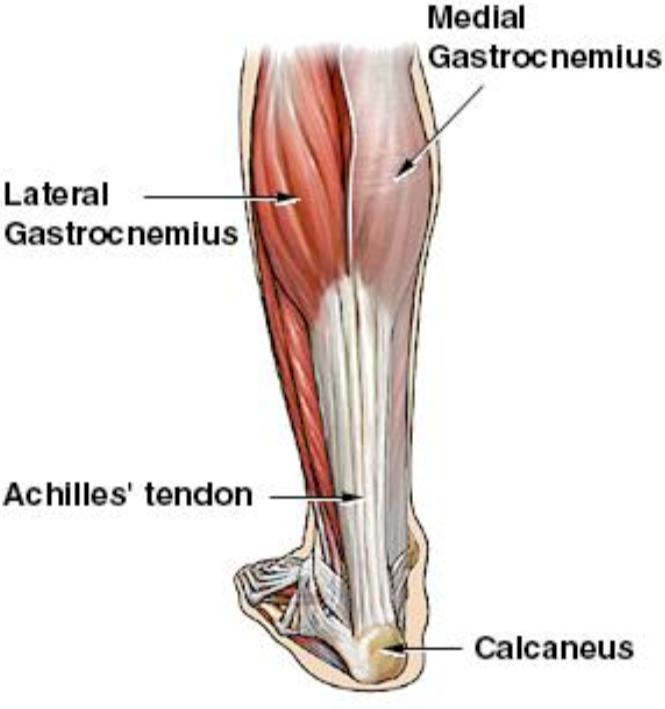What is the Achilles tendon?
The Achilles tendon is the tendon at the back of your leg right above your ankle. It connects your calf muscles to your heel bone (calcaneus). Calcaneal tendon is the medical name for the Achilles tendon. Tendons are cords of strong, flexible tissue that connect muscles to bones throughout your body. The Achilles tendon gets its name from Achilles — a hero in ancient Greek mythology who was invulnerable to any injuries except for one spot on the back of his heel.
What does the Achilles tendon do?
The Achilles tendon connects your calf muscles to your heel bone and helps them move your foot and ankle.
When you contract (squeeze) a muscle, its tendons pull the attached bone, making it move. They’re like levers that help bones move when your muscles contract and expand. Your Achilles tendon lets you move your heel and foot. When your calf muscles contract, your Achilles tendon lifts your heel. You use your Achilles tendon when you:
- Walk.
- Run.
- Jump.
- Climb stairs.
- Stand on your tiptoes.
Where is the Achilles tendon located?
The Achilles tendon starts in the middle of your calf and runs down the back of your leg to your heel. You have two Achilles tendons, one in each leg.
Where is the Achilles tendon located?
The Achilles tendon starts in the middle of your calf and runs down the back of your leg to your heel. You have two Achilles tendons, one in each leg.
How big is it?
The Achilles tendon is usually between 6 and 10 inches (15 to 26 centimeters) long in adults. It’s the thickest and strongest tendon in your body. It can support forces around four times your body weight.
How do you heal an Achilles tendon injury?
Which treatments you’ll need depends on which type of Achilles tendon injury you have, what caused it, your usual activity levels and your goals. Your provider will tell you which treatments will work best for your unique situation. Some common treatments for Achilles issues include:
- The RICE method: Rest, icing your Achilles, wearing a compression bandage and elevating your lower leg.
- Medication: You might need over-the-counter (OTC) medicines like NSAIDs (nonsteroidal anti-inflammatory drugs) or acetaminophen. Your provider might give you prescription anti-inflammatory medication like corticosteroids.
- Immobilization: Wearing a brace or walking cast (a boot) can hold your lower leg and ankle in a stable position while your Achilles tendon heals.
- Physical therapy: A physical therapist will help you strengthen the muscles around your Achilles tendon and increase your flexibility.
- Orthotics: You can buy over-the-counter shoe inserts that support your feet and ankles or have a set custom made.
- Surgery: Most people don’t need surgery, but some injuries (especially Achilles tendon ruptures) need surgical repair.






